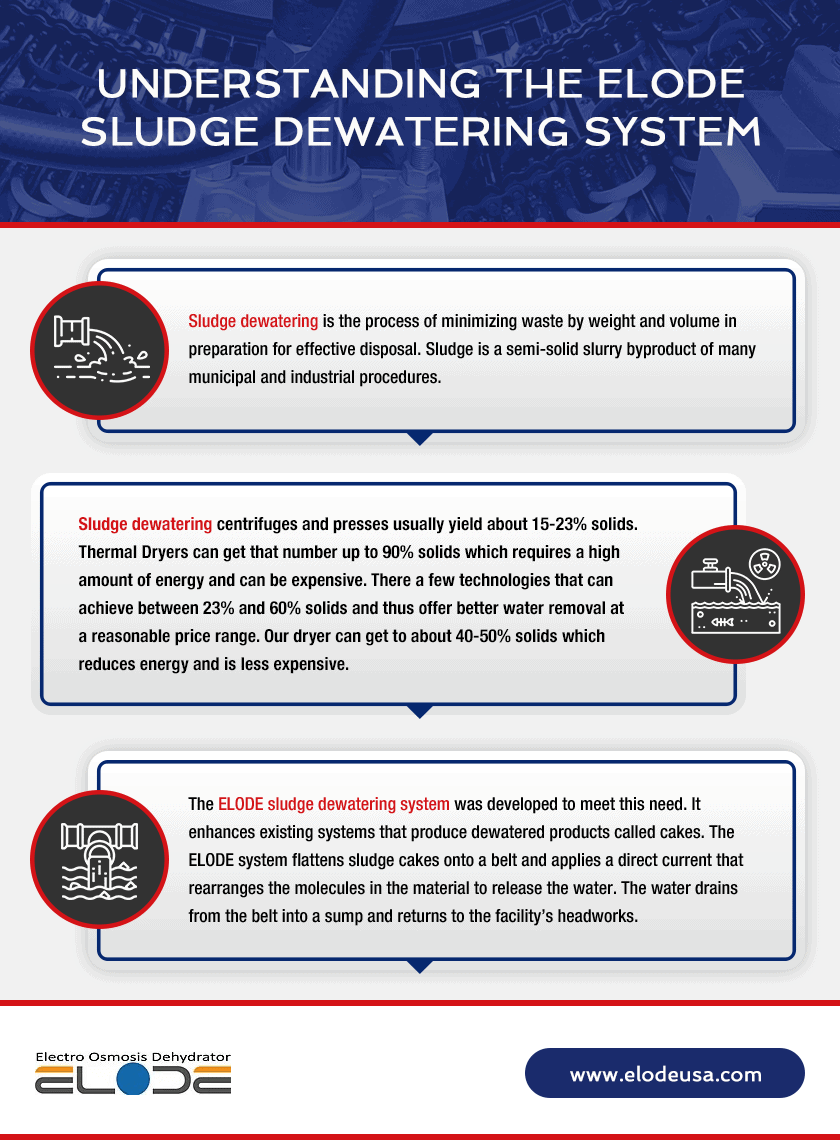Cutting Costs with ELODE Sludge Dewatering
Effectively dewatering wastewater sludge has traditionally involved belt presses, rotary fan presses, screw presses and centrifuge. However, these technologies can only remove water to a limited extent.
The ELODE sludge dewatering system is an effective solution that separates solid and liquid components for easier disposal. Its compact design installs easily into a facility’s dewatering process. Compared to thermal drying, ELODE sludge dewatering equipment is more cost-effective and energy-efficient.
Understanding the ELODE Sludge Dewatering System
Sludge dewatering is the process of minimizing waste by weight and volume in preparation for effective disposal. Sludge is a semi-solid slurry byproduct of many municipal and industrial procedures.
Sludge dewatering centrifuges and presses usually yield about 15-23% solids. Thermal dryers can get that number up to 40%, but they come with high equipment costs and a large footprint. There are few technologies that can achieve between 23% and 60% solids and thus offer better water removal at a reasonable price range.
The ELODE sludge dewatering system was developed to meet this need. It enhances existing systems that produce dewatered products called cakes. The ELODE system flattens sludge cakes onto a belt and applies a direct current that rearranges the molecules in the material to release the water. The water drains from the belt into a sump and returns to the facility’s headworks.
In just two to three minutes, the ELODE system can double solid content. For example, if you are currently operating at 15% solids, our system can raise that level to 30% or even more. The ELODE dewatering process also takes up less floor space and can be retrofitted to most existing equipment.
How Does ELODE Save Money and Energy?
Eradicating sludge residue can be expensive when using conventional thermal drying methods. Because the ELODE system uses an electrical field instead of boiling away excess water, it saves significant energy and operating costs. Although the technology does produce some heat, it is far less than that produced by thermal dryers. ELODE uses about 120 kilowatts per ton of wet cake, which is more than mechanical dewatering but far less than thermal drying.
Shortly after investing in ELODE equipment, you will see a quick payback. This especially applies if you operate for large urban areas that pay higher rates for landfilling. For example, if it currently costs you $60 per wet ton to landfill solids, the ELODE system can help you cut your costs in half.
Try ELODE’s Innovative Dewatering Technology
While mechanical presses and centrifuges offer limited dewatering capabilities, thermal dryers consume enormous amounts of energy to dewater sludge. ELODE presents a balanced solution. Unlike thermal drying, our electro-osmosis dehydrator can save money and energy while effectively boosting solids content.
Whether you process food wastewater or municipal wastewater, Elode USA Inc’s dewatering systems can help you dewater sludge while cutting transportation, disposal, and storage costs. Contact Elode USA Inc for more details about our sludge dewatering system.

